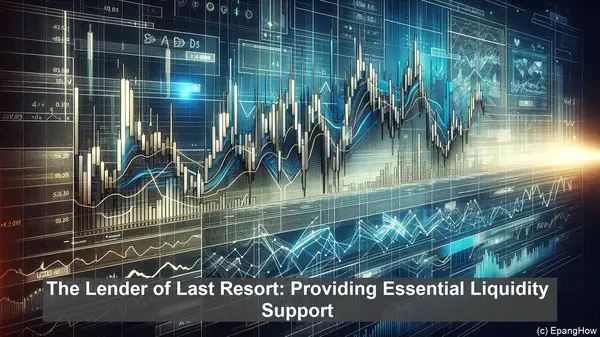Introduction: The Crucial Roles in Times of Crisis
Hello everyone! In the realm of finance, there are two key entities that play vital roles in maintaining stability during tumultuous times: the lender of last resort and the market maker of last resort. While their objectives may seem similar, their functions and mechanisms differ significantly. Today, we’ll explore these differences and understand how they contribute to the overall resilience of financial systems. So, let’s dive in!
The Lender of Last Resort: Providing Essential Liquidity Support
When a financial institution faces severe liquidity shortages, it can turn to the lender of last resort, often a central bank. The lender of last resort acts as a backstop, offering emergency funds to solvent but illiquid banks. This support is crucial to prevent a liquidity crisis from turning into a solvency crisis, where banks may fail to meet their obligations. By providing this liquidity, the lender of last resort instills confidence in the banking system, assuring depositors and investors that their funds are safe. However, this support is not without conditions. The borrowing institution must provide sufficient collateral and pay an interest rate, ensuring that the assistance is temporary and encourages the institution to seek alternative funding sources in the market.
The Market Maker of Last Resort: Ensuring Smooth Market Functioning
In times of market stress, such as heightened volatility or a lack of buyers and sellers, the market maker of last resort steps in. This entity, often a central bank or a designated financial institution, acts as a buyer or seller of last resort, providing liquidity to the market. By doing so, it ensures that there is always a counterparty available, preventing a situation where market participants are unable to transact. This role is especially critical in markets where there may be a limited number of active participants or during times of extreme market conditions. The market maker of last resort, like the lender of last resort, aims to restore confidence and stability, signaling that the market is functioning, and there is a fair and orderly price discovery process.

Distinguishing Factors: Objectives and Mechanisms
While both the lender of last resort and the market maker of last resort provide liquidity support, their underlying objectives and mechanisms differ. The lender of last resort primarily focuses on the stability of the banking system, ensuring that solvent banks do not face a liquidity-induced collapse. Its actions are often guided by the need to maintain public confidence in the financial system. On the other hand, the market maker of last resort’s primary objective is the smooth functioning of the market. By providing liquidity, it aims to bridge temporary gaps in supply and demand, preventing disruptions that can have cascading effects. In terms of mechanisms, the lender of last resort typically provides funds directly to the borrowing institution, while the market maker of last resort operates in the market, actively buying or selling assets to maintain liquidity.

